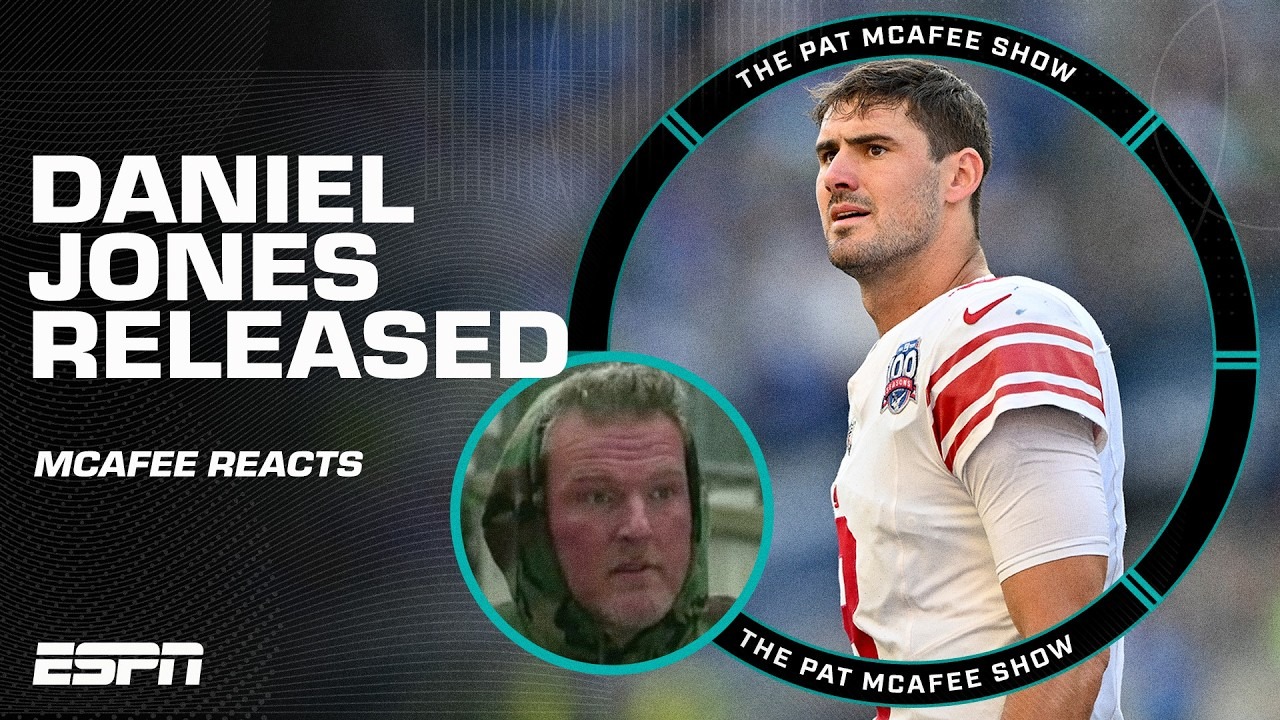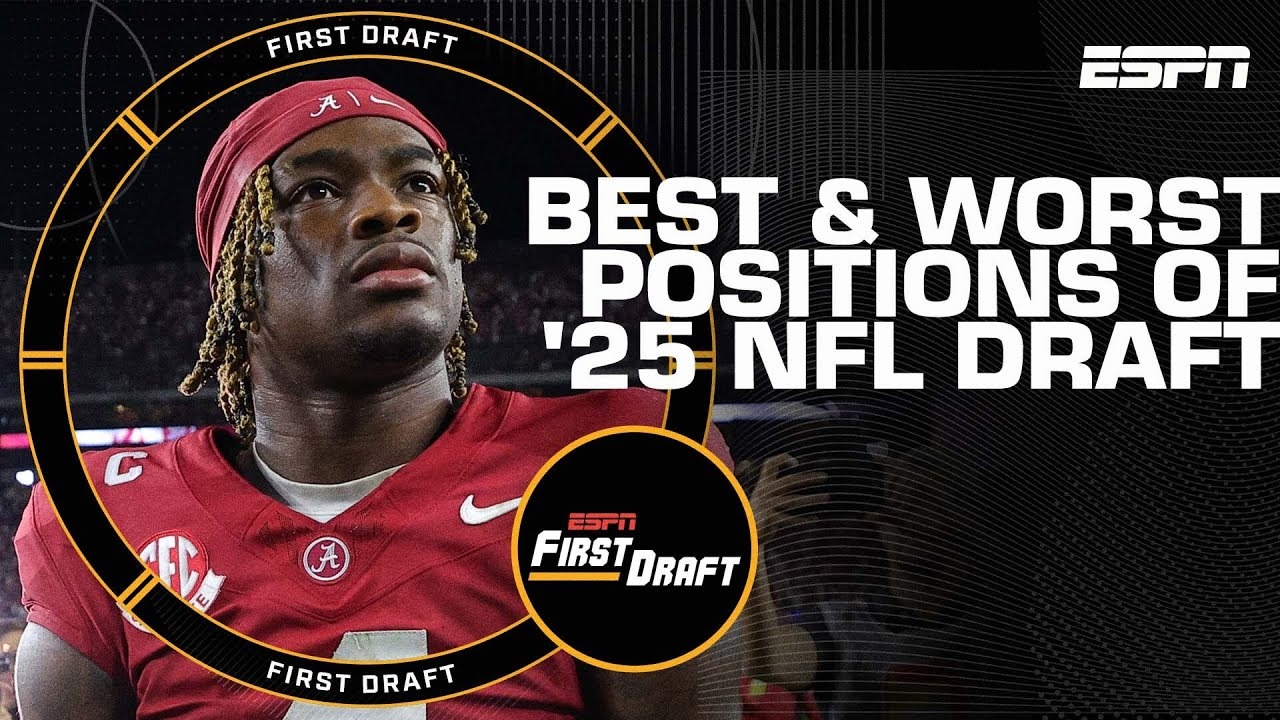“I would not advocate a 6,000-calorie diet,” Melanie Wilkinson, a Nutritionist at The Body Lab, tells me over Zoom as I prepare for a week of doing just that.
It feels like a warning. For the next seven days, my calorie count will reach such colossal heights: just shy of three times the recommended daily intake for an adult male and encompassing units of measurement one could only describe as a ‘bucketload’, ‘have I read that right?’ and ‘this is so far beyond what any normal person would need’.
The person whose diet I am to emulate, however, is not someone you would exactly call normal. In fact, many would argue that, at just 22 years of age, Manchester City striker Erling Haaland isn’t actually a person, but some sort of futuristic AI machine sent back in time by the footballing Gods to wreak havoc on defences the world over. Having netted a staggering 138 goals in just 133 club appearances since 2018, the statistics would certainly seem to support that theory.
And his seemingly insatiable appetite for goals is matched only by his seemingly insatiable appetite for actual food. In ‘Haaland: The Big Decision’, a Norwegian documentary released in 2022, the forward, who can reportedly pack away 6,000 calories in a single day, revealed a whole host of products he regularly consumes that, in his own words, “other people don’t eat”. Calves liver, cow’s heart, and filtrated water all feature prominently on the menu of this remarkable, once-in-a-generation phenomenon.
But expanding my culinary palate, as well as feeling more than a little full was the least of my worries.
“Drastic changes in diet can cause a whole host of symptoms,” Melanie adds. “You may feel quite sluggish throughout the whole process. Other things you might experience are disrupted sleep, changes to your digestion and potentially heartburn.”
Not quite the ‘suddenly you’ll find yourself banging in goals for fun and have the confidence to wear pyjamas in a restaurant’ prognosis I was hoping for.

And, sure enough, sluggishness quickly became an overwhelming feeling as I gorged on porridge, pasta, protein shakes, poultry, and a 32-piece portion of sushi. And that was only day one.
Prior to the experiment, I hadn’t been entirely sure what 6,000 calories would actually look like in reality. In my mind, I’d pictured myself at the end of it all as something akin to the character from the restaurant sketch in Monty Python’s The Meaning of Life who explodes after eating too much.
So to find I’d reached that level less than two days in, the novelty of putting away six meals in 12 hours and gloating to my friends about how I was following the diet of an elite athlete was wearing decidedly thin.
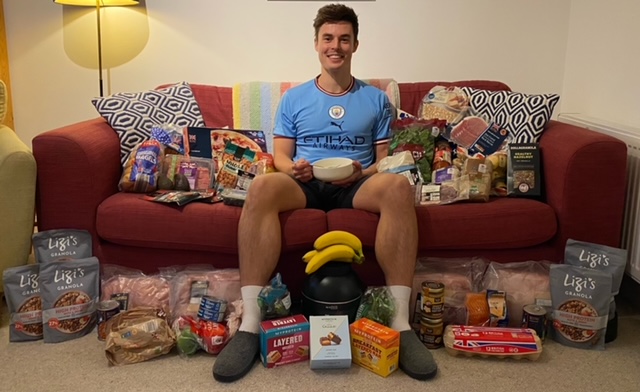
And just as Melanie predicted, I struggled to get any decent sleep those first few nights. The thought of waking up bloated beyond belief only to then force down half a loaf of bread followed swiftly by a hefty portion of Greek yoghurt, granola, nuts, and berries became increasingly more daunting.
However, by the time Wednesday rolled around, things started to take a surprisingly pleasant turn. I began to feel more energised and even a little stronger, perhaps due to what Calum Sharma, The Body Lab’s Head of Exercise Science, describes as a “surplus in energy.”
Calum, who has previously worked with AFC Wimbledon and Saracens RFC, admitted that while a 6,000-calorie diet in team sport isn’t unheard of, “even for a professional footballer, it’s a lot,” adding that “you’re more likely see those numbers in the diet of a Rugby Union prop”.
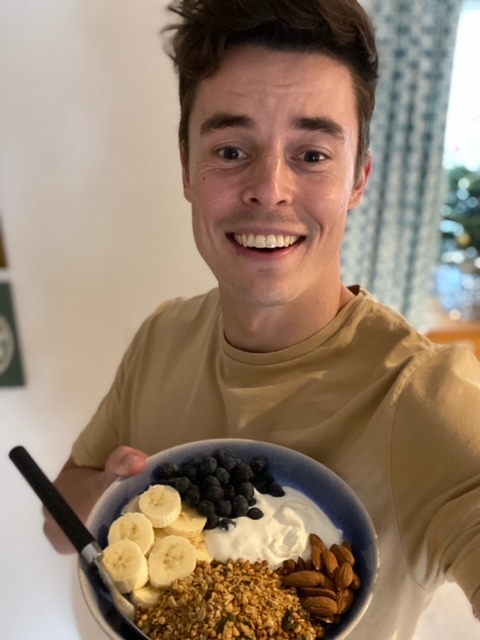
It was at this point I decided it would be sensible to get my exercise regime in order, so under the cover of darkness I took myself running – or rather, shuffling in a laboured fashion – around the streets near my house.
Thursday required some additional self-motivation: it was the day of Haaland’s signature liver and heart extravaganza. Jokes about it being offal notwithstanding, it actually proved quite tasty when accompanied with some bacon, potatoes and roasted veg.
And the nutritional benefits are such that it’s hardly a surprise to those at The Body Lab to see such items feature so prominently in the Norwegian’s diet.
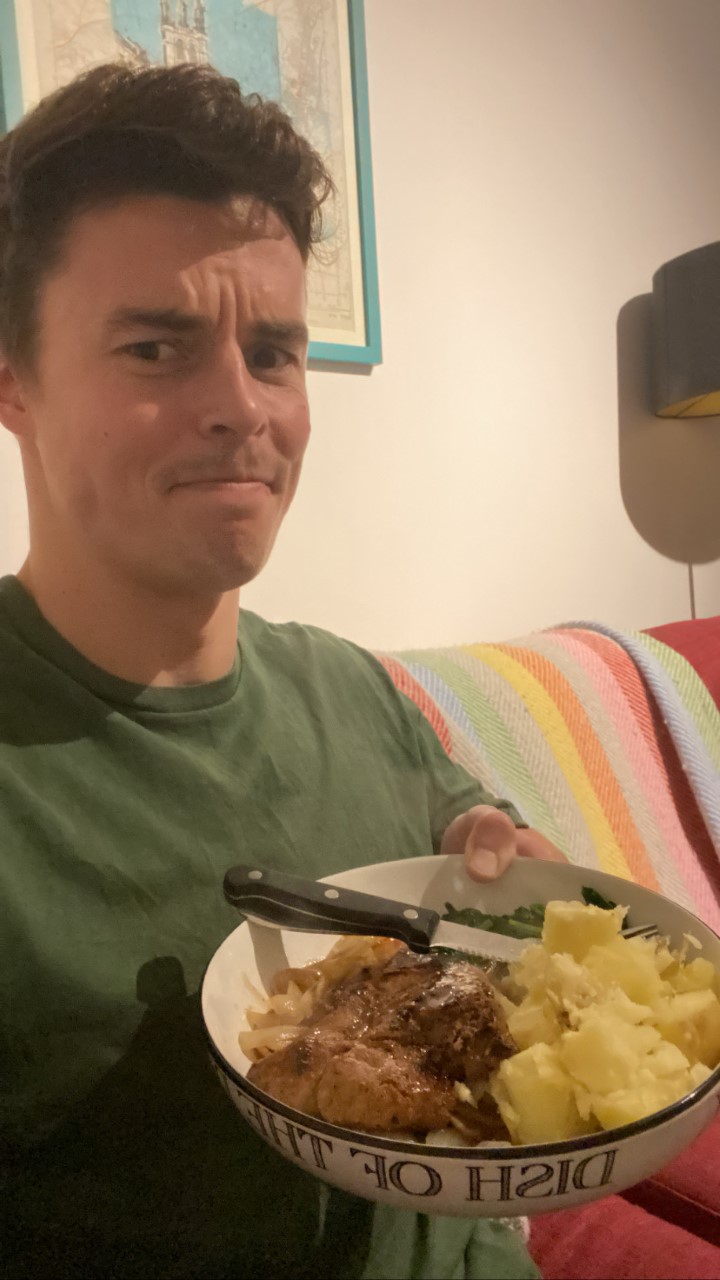
“Those foods are high in iron which links to oxygen-carrying capacity,” explains Melanie.
“Although higher in cholesterol, offal is a very nutrient-dense food, abundant in micronutrients. It is also a bioavailable form of protein and has a good amino acid profile.”
That’s not to say the more processed products don’t have a place in Haaland’s life. That he’s partial to the odd sweet and sour chicken takeaway and kebab pizza is perhaps proof that he might actually be human after all.
So after a Friday evening spent tucking into a homemade lasagne, Haaland’s favourite dish prepared for him by his father, Alf-Inge, before every home game, it was onto a weekend of the Norwegian’s so-called ‘cheat’ meals.

Now I’ll admit that ordering a doner kebab having not previously been belting out Mr Brightside on a nightclub dancefloor while drenched in Jägermeister at 3am was a novel experience.
Equally unfamiliar was layering it atop a pizza and wolfing the whole thing down with a protein shake as my housemates looked on despairingly while we watched a trashy festive film.
It wasn’t quite the fairytale ending to my Erling experiment. I’d gained six kilos rather than Pep Guardiola’s phone number; a renewed appreciation for the time between meals instead of a six-figure contract.
Still, I was intrigued to know whether the experts believe this sort of high-calorie, nutritionally-dense diet might be the future for budding footballers hoping to follow in the footsteps of Man City’s No.9.

“It is so dependent on the individual, there is no one-size-fits-all approach,” explains Melanie.
“A footballer may well do a genetic analysis before to assess their preferential food sources. We are also seeing increasingly more research on the role of the gut microbiome in health and performance.”
Calum adds: “Before it was case of calories in vs out, which for the average person still applies. Now diets are tailored to each individual and take into consideration so many variables.
“We now know that calories don’t necessarily equate to muscle gain or anything like that. It’s how you’re functioning at a cellular level.
“Everyone is different. He’s in great physical shape so something is definitely working for him.”
I think I’ll stick to my measly 2,000 calories a day for now.
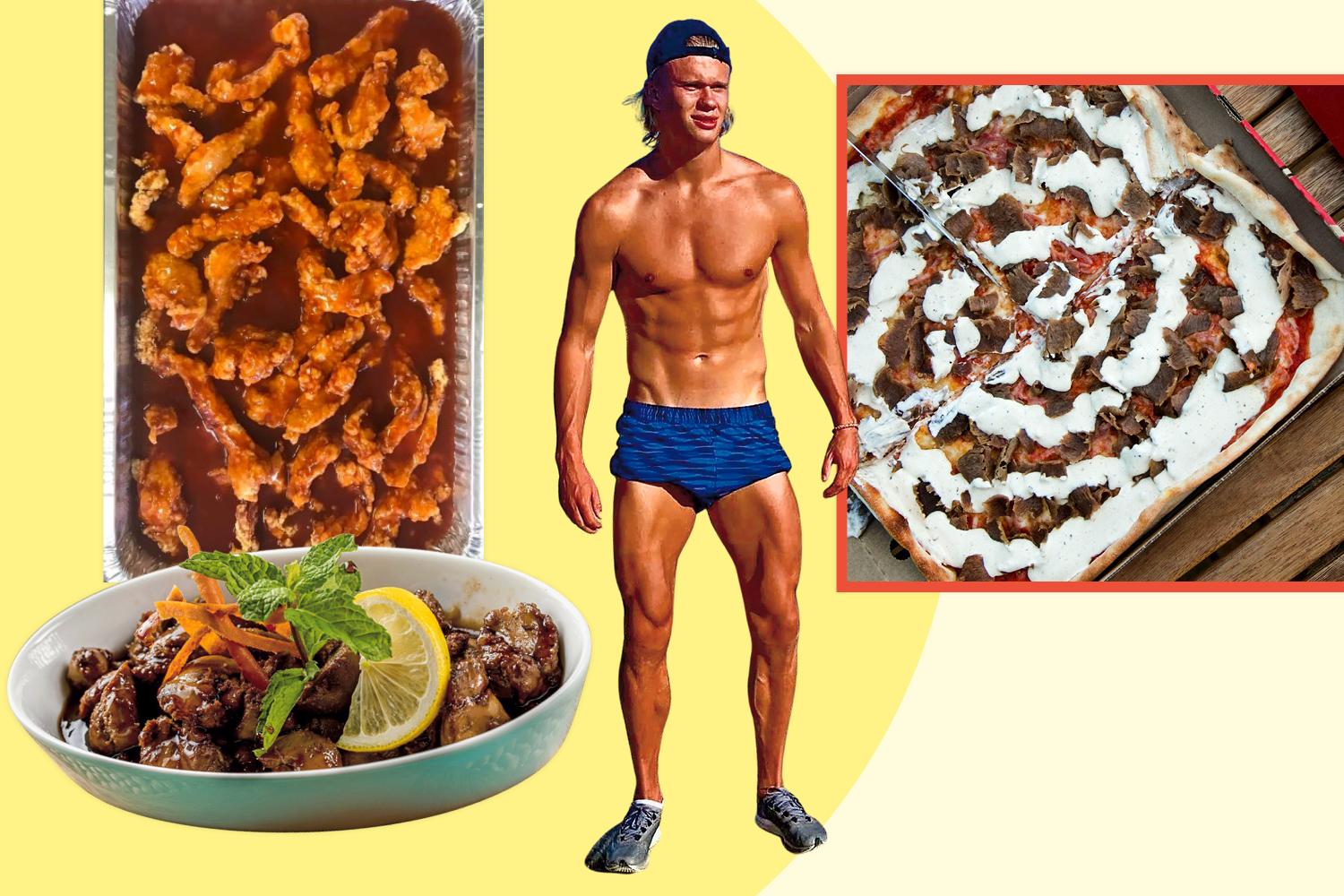
Chicken and Beef supplied by Musclefood
Protein powder and bars supplied by MyProtein
Granola supplied by Lizi’s Granola and RollaGranola
Sushi supplied by Sushi Daily
Other groceries supplied by Aldi
Weight prior to experiment: 76.8kg
Weight after experiment: 83.8kg
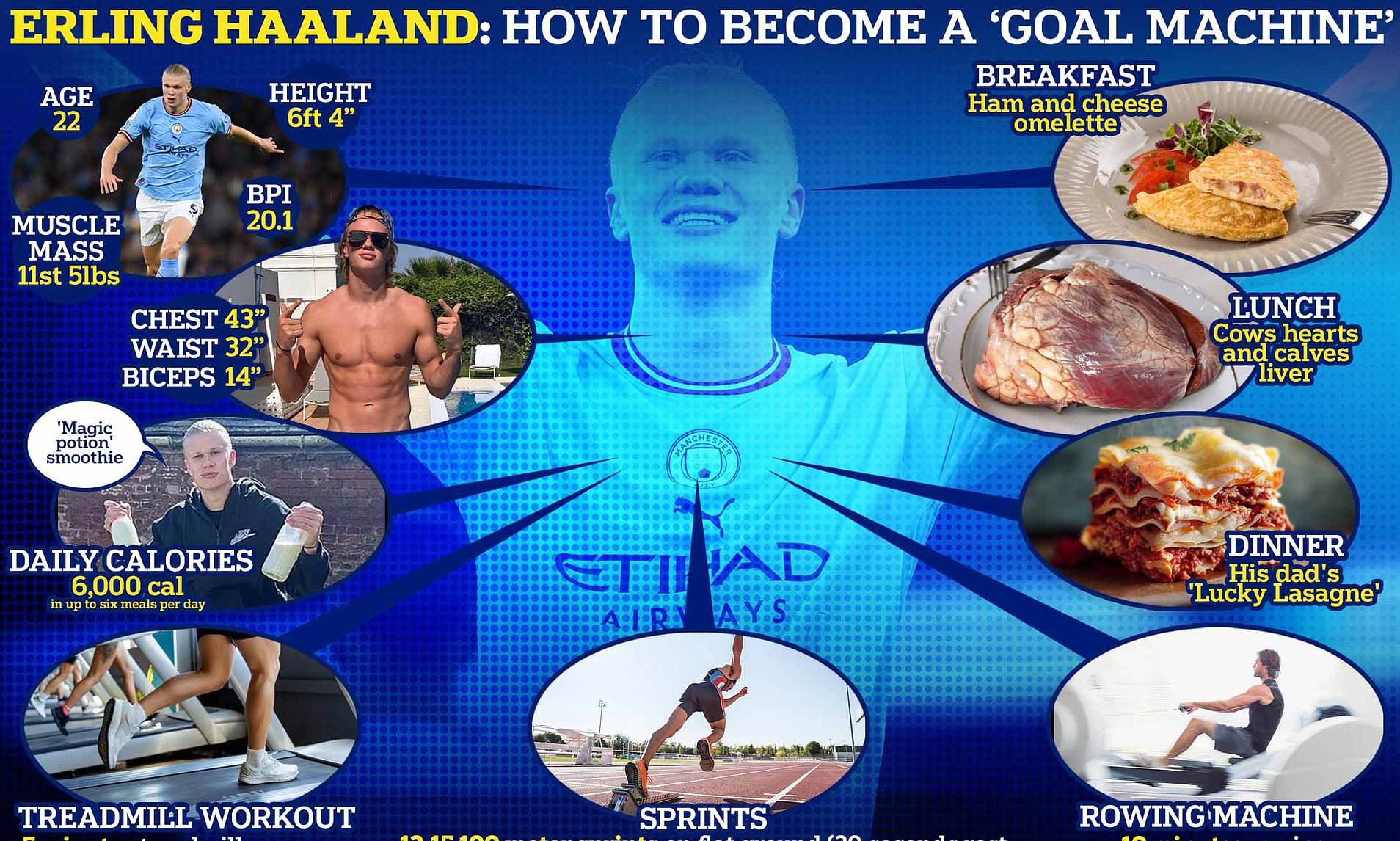
Mon
Breakfast – 200g porridge oats with semi-skimmed milk and honey (1080 kcal)
Snack- Grilled sandwich with 2x chicken breast (926 kcal)
Lunch – 32-piece sushi portion (1286 kcal)
Snack – Protein shake (350 kcal)
Dinner – 2x chicken breast with pasta (1002 kcal)
Snack – 200g granola and greek yoghurt (1330 kcal)
Total daily calories = 5,974 kcal
Tues
Breakfast – 4x slices of wholemeal bread with 100g peanut butter (994 kcal)
Snack – 200g Greek yoghurt with 200g granola, blueberries, banana & Almonds (920 kcal)
Lunch – 2x turkey burgers in a bagel (930 kcal)
Snack – Protein bar (350 kcal)
Dinner – 500g grilled salmon, 400g rice & roasted veg plus protein shake (1920 kcal)
Snack – 80g whole almonds, protein bar, 2x apples & 1x banana (1030 kcal)
Total daily calories = 6,144 kcal
Weds
Breakfast – 3x scrambled eggs with 4x rashers of bacon, 1x large avocado on 2x slices of wholemeal toast with butter (1120 kcal)
Snack – Oats and berry smoothie & protein bar (700 kcal)
Lunch –2x ham bagels and protein shake (1200 kcal)
Snack – 800g lentil soup with 2x slices of wholemeal bread (600 kcal)
Dinner – 4x chicken wraps (965 kcal)
Snack – 200g granola, 200g Greek yoghurt, 1x apple plus protein shake (1260 kcal)
Snack – 2x slices of wholemeal toast with peanut butter (300 kcal)
Total daily calories = 6,145 kcal
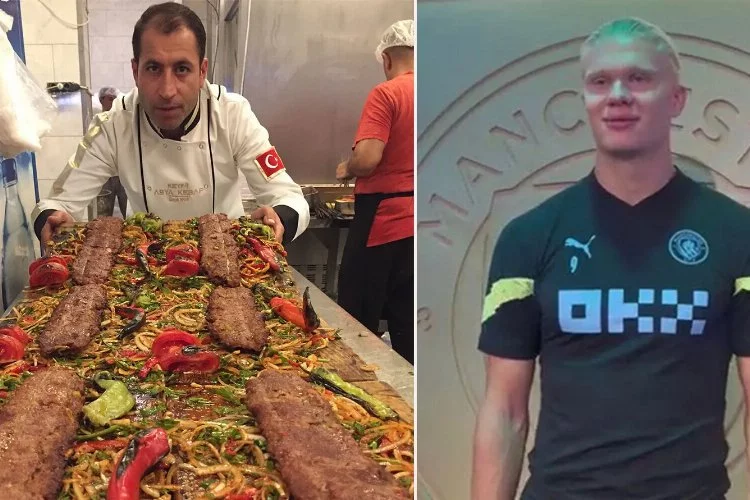
Thurs
Breakfast – 4x pancakes with 1x banana & 100g Greek yoghurt (965 kcal)
Snack – 3x scrambled eggs & 2x large avocado on toast (1100 kcal)
Lunch – 200g calves liver with 300g rice and veg (735 kcal)
Snack – Oat & peanut butter smoothie and protein bar (1250 kcal)
Dinner – 200g cow heart with 300g pasta and veg (870 kcal)
Snack – 4x 25g pack of beef jerky, 1x bagel with 120g peanut butter (1259 kcal)
Total daily calories = 6,179 kcal
Fri
Breakfast – 3x egg omelette with spinach & oat and summer fruit smoothie (850 kcal)
Snack – 2x medium avocado on toast with 1x chicken breast (750 kcal)
Lunch – 2x chicken breast with 300g sweet potato mash (730 kcal)
Snack – 2x apple with 50g peanut butter (411 kcal)
Dinner – Beef lasagne (2500 kcal)
Snack – 200g Greek yoghurt and 50g almonds (900 kcal)
Total daily calories = 6,141 kcal
Sat
Breakfast – 4x pancakes with 100g granola & fruit (1000 kcal)
Snack – Protein shake (350 kcal)
Lunch – 500g turkey mince and 200g pasta (800 kcal)
Snack – 120g granola with 200ml semi-skimmed milk (550 kcal)
Dinner – Sweet and sour chicken with egg-fried rice (2500 kcal)
Snack – 3x wholemeal toast with 2x banana and 100g peanut butter (1004 kcal)
Total daily calories = 6,204 kcal
Sun
Breakfast – 120g granola with 200ml semi-skimmed milk (550 kcal)
Snack – Oats & fruit smoothie with 50g almonds (600 kcal)
Lunch – 200g mackerel fillets with 200g rice (930 kcal)
Snack – 400g minestrone soup with 2x slice wholemeal bread (400 kcal)
Dinner – Large pizza with large doner kebab (3130 kcal)
Snack – 3x boiled eggs & protein shake (600 kcal)
Total daily calories = 6,210 kcal
Total weekly calories = 42,997 kcal

